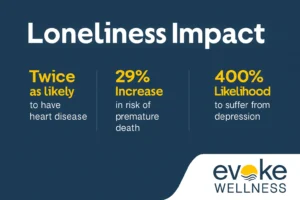You’ve tried once and stepped away. You might feel like you left people hanging. Now, you’re wondering—how do you go back to treatment when there’s work, bills, children, and expectations waiting?
Let me tell you: balancing those things isn’t an act of perfection. It’s an act of courage. And it’s entirely possible, even if it doesn’t feel that way right now.
At Evoke Wellness Ohio, we’ve witnessed countless people who thought it wasn’t doable—return to treatment and find healing without losing everything they held dear.
This guide is for the person holding that tension: a heart rooted in responsibility and an ache for help. Here’s how to weave your responsibilities into a path forward, step by intentional step.
1. Speak to Your Employer Before You Leave
The idea of telling your employer might feel terrifying—or even impossible. But pre-emptive honesty often turns expectations into empathy.
Consider saying something like: “I’m returning to residential treatment for my health. I’m committed to my job and want to discuss a return agreement.” Many workplaces have leave options or flexible plans that support mental health and recovery. That’s not a weakness—you’re taking the adult step that most people don’t.
Return-to-work agreements, which outline expectations and accommodations, help ground both you and your employer in clarity and support.(Buena Vista Recovery, Evoke Wellness at Hilliard)
2. Make Your Home Part of the Plan, Not an Afterthought
You don’t need to craft a grand confession. A short, clear note or honest conversation can set the tone.
“Hey, I’ve made the choice to reenter residential treatment to reclaim myself. That means I’ll be stepping away, but I’d love your help with…” You set the expectation. You give them a role. You remind them—and yourself—that healing isn’t detachment. It’s care.
Family involvement strengthens outcomes. It creates a support system you don’t have to hold alone.(Laguna Treatment Center)
3. Map Out Your Life Before You Go
A little planning ahead goes a long way.
- Pull together your essential to-do list: bills, pet care, appointments.
- Identify someone who can help keep your life steady while you’re away.
- Have reminders ready—phone alarms, sticky notes, voice messages to yourself.
When life feels smoother, your heart can open. And that space gives treatment a chance to breathe.
4. Be Thoughtful With Boundaries—but Let Them Bend So You Can Breathe
You’re not running away—you’re recalibrating. Treat your absence like a gentle gap, not a void of abandonment.
Decide ahead:
- When and how people can contact you (within your treatment center’s rules)
- What’s being handled at home and what can wait until your return
Clinical guidelines remind us that routine helps stabilize anxiety and create healthy habits.(Verywell Mind, Promont Wellness, Wikipedia, Evoke Wellness Corporate, Constellation Behavioral Health)
5. Use Support Systems—You Don’t Have to Carry Everything
Peer support, friends, treatment alumni—they’re not extras. They’re anchors.
They offer:
- Emotional grounding when things shift
- Human insight into systems that work
- A reminder: you aren’t building a path alone
Peer and sponsor relationships lower relapse risk and reinforce stability.(Promont Wellness, Wikipedia, Wikipedia)
6. Practice Self-Care That Sustains You Through Absence
Your home life won’t pause—and that can feel overwhelming.
You might:
- Schedule “me time” on paper—call that person, take a walk, find one quiet moment each day.(Verywell Mind)
- Physically step back from screens, expectations, texts.
- Sleep something like 7 to 8 hours, because healing requires rest.
- Eat. Even simple thing. Healing isn’t grand—it’s steady.
That caring action, in the quiet, keeps you held—even while out of reach.
7. Set a “Soft Anchor” for Your Return
Pick one small touchstone that you’ll bring back with you.
Could be:
- A morning coffee ritual.
- A call with your peer or coach.
- Walking your neighborhood.
Someone or something gentle reminding your heart, You can come home again—and it’s still you waiting.
FAQs: Practical Answers for People Returning to Residential Treatment
How do I communicate with work without oversharing?
Keep it simple: “I’m entering residential treatment from [dates] and will follow up on returning soon. I’d like to discuss our options.”
Should I let my family know?
Yes—briefly is enough. Something like: “I’m going away for treatment. I’d appreciate your help while I’m focused on healing.” Sharing helps everyone hold space.
What if I’m a parent or caregiver?
Plan temporarily: ask someone to watch kids or pets, set up delivery or drop-off schedules, and leave an emergency list visible.
How do I stay grounded while I’m away?
Keep contact with one trusted person. Whether peer support, coach, or calm friend—they can carry a check-in, so you’re not hovering on guilt or silence.(lakepointrecovery.org, Wikipedia)
Is basic self-care selfish when life’s falling through?
Not at all. Slowing your breath, holding yourself, and tending to physical needs are radical, life-preserving acts.(promises.com)
What does aftercare look like?
Before you leave, identify one thing to re-anchor—morning walk, mindfulness pause, therapy call—so you come back not to chaos, but to one thing that supports you.
Balancing returning to treatment with your life isn’t about erasing your humanity. It’s about holding everything soft—your job, your family, your healing—in the same arms.
You’re not failing. You’re choosing yourself. And that is more than enough.
When you’re ready, call (866) 430‑9267 or visit our residential treatment page in Hilliard, Ohio. We’ll help you find that balance with gentleness, honesty, and real steps—no guilt attached.



